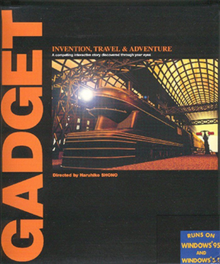
Day of the Tentacle, also known as Maniac Mansion II: Day of the Tentacle, is a 1993 graphic adventure game developed and published by LucasArts. It is the sequel to the 1987 game Maniac Mansion. The plot follows Bernard Bernoulli and his friends Hoagie and Laverne as they attempt to stop the evil Purple Tentacle - a sentient, disembodied tentacle - from taking over the world. The player takes control of the trio and solves puzzles while using time travel to explore different periods of history.
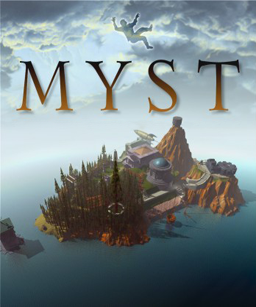
Myst is an adventure video game designed by Rand and Robyn Miller. It was developed by Cyan, Inc., published by Broderbund, and first released in 1993 for the Macintosh. In the game, the player travels via a special book to a mysterious island called Myst. The player interacts with objects and traverses the environment by clicking on pre-rendered imagery. Solving puzzles allows the player to travel to other worlds ("Ages"), which reveal the backstory of the game's characters and help the player make the choice of whom to aid.

The Journeyman Project is a time travel adventure computer game developed by Presto Studios.

Hellboy is a comic book superhero created by writer-artist Mike Mignola. The character first appeared in San Diego Comic-Con Comics #2, and has since appeared in various eponymous miniseries, one-shots and intercompany crossovers. The character has been adapted into three live-action feature films – two starring Ron Perlman in 2004 and 2008 in the title role, and one in 2019 which starred David Harbour, as well as two straight-to-DVD animated films, again starring Perlman, and four video games – Asylum Seeker, The Science of Evil, as a playable character in Injustice 2, and Web of Wyrd.

Ronald Perlman is an American actor. His credits include the roles of Amoukar in Quest for Fire (1981), Salvatore in The Name of the Rose (1986), Vincent in the television series Beauty and the Beast (1987–1990), for which he won a Golden Globe Award, One in The City of Lost Children (1995), Johner in Alien Resurrection (1997), Koulikov in Enemy at the Gates (2001), Hellboy in both Hellboy (2004) and its sequel Hellboy II: The Golden Army (2008), Clay Morrow in the television series Sons of Anarchy (2008–2013), Nino in Drive (2011) and Benedict Drask in Don't Look Up (2021). As a frequent collaborator of film director Guillermo del Toro, he has had roles in the del Toro films Cronos (1993), Blade II (2002), Hellboy (2004), Pacific Rim (2013), Asher (2018), Nightmare Alley (2021), and Pinocchio (2022).

Adobe Shockwave is a discontinued multimedia platform for building interactive multimedia applications and video games. Developers originate content using Adobe Director and publish it on the Internet. Such content could be viewed in a web browser on any computer with the Shockwave Player plug-in installed. MacroMind originated the technology; Macromedia acquired MacroMind and developed it further, releasing Shockwave Player in 1995. Adobe then acquired Shockwave with Macromedia in 2005. Shockwave supports raster graphics, basic vector graphics, 3D graphics, audio, and an embedded scripting language called Lingo.

Cosmology of Kyoto is an adventure game developed by Softedge and published by Yano Electric. It was released for Japan in 1993, and then in North America, for the Macintosh in 1994 and then for the PC in 1995.
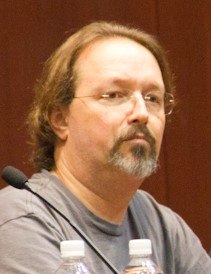
Marc Laidlaw is an American writer. He is a former lead writer for the video game company Valve, where he worked on the Half-Life series before his departure in 2016. Before joining Valve, Laidlaw was a novelist working in the fantasy and horror genres, and in 1996 won the International Horror Guild Award for his novel The 37th Mandala.

Simon the Sorcerer II: The Lion, the Wizard and the Wardrobe is an adventure game created by Adventure Soft, and released in 1995 for the MS-DOS. It is the second installment in the Simon the Sorcerer series of games, and the sequel to 1993's Simon the Sorcerer. The game's story focuses on a young teen named Simon, who is transported into a parallel universe of magic and monsters that he visited before, via a magical wardrobe created by an evil sorcerer he defeated in the last game. Players engage in a quest to help him find more fuel for the wardrobe by searching a vast world, consisting of parodies on popular fantasy novels and fairy tales.

Guillermo del Toro Gómez is a Mexican filmmaker. A recipient of three Academy Awards and three BAFTA Awards, his work has been characterized by a strong connection to fairy tales and horror, with an effort to infuse visual or poetic beauty in the grotesque. He has had a lifelong fascination with monsters, which he considers symbols of great power. He is also known for his use of insectile and religious imagery, his themes of Catholicism, anti-fascism, and celebrating imperfection, underworld motifs, practical special effects, and dominant amber lighting.
A gadget is a small technological object such as a device or an appliance that has a particular function, but is often thought of as a novelty.
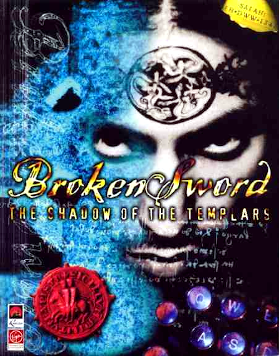
Broken Sword: The Shadow of the Templars is a 1996 point-and-click adventure game developed by Revolution Software. It is the first in the Broken Sword series, co-written and directed by Charles Cecil. The player assumes the role of George Stobbart, an American tourist in Paris, as he attempts to unravel a deep conspiracy involving a sinister cult and a hidden treasure, seeing him travel to various locations around Europe and the Middle East. The game's storyline was conceived to feature a serious tone and heavily influenced by research on Knights Templar by Cecil, but was also interlaced with humor and graphics in the style of classic animated films.

Tim Wright, known professionally as Cold Storage, is a Welsh video game music composer most known for his work in video game soundtracks such as Shadow of the Beast II, Agony, Lemmings, Wipeout and Colony Wars.

Space Quest IV: Roger Wilco and the Time Rippers is a 1991 graphic adventure game by Sierra On-Line, and the fourth entry in the Space Quest series. The game was released originally on floppy disks on March 4, 1991, and later released on CD-ROM in December 1992 with full speech support; an Atari ST version was announced via Sierra Online's magazine, Sierra News Magazine, but was later canceled. The game sees players assume the role of Roger Wilco, who is thrust into a new adventure across time and space where he must thwart the plans of an old foe that is seeking revenge against him.
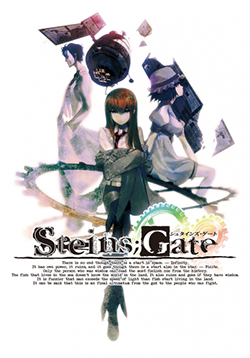
Steins;Gate is a 2009 science fiction visual novel game developed by 5pb. and Nitroplus. It is the second game in the Science Adventure series, following Chaos;Head. The story follows a group of students as they discover and develop technology that gives them the means to change the past. The gameplay in Steins;Gate includes branching scenarios with courses of interaction.
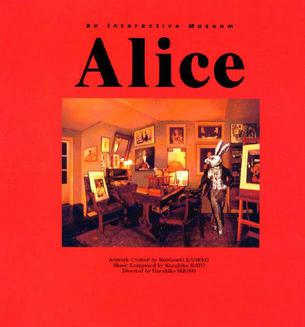
Alice: Interactive Museum is a 1991 point-and-click adventure game, developed by Toshiba-EMI Ltd and directed by Haruhiko Shono. It uses elements and ideas inspired by Lewis Carroll's Alice's Adventures in Wonderland, and pioneered the use of pre-rendered 3D computer graphics, being released two years before 1993's highly notable The Journeyman Project and Myst. It was initially designed for Mac computers and later released for the Windows 3.x and Windows 95 platform. In 1991, Shono won the Minister of International Trade and Industry's AVA Multimedia Grand Prix Award for the game, and in 1995, Newsweek coined the term "cybergame" to describe games such as Alice and Shono's second game, L-Zone. They were followed by Shono's third title, Gadget: Invention, Travel, & Adventure, in 1993.
Haruhiko Shono is a Japanese computer graphics artist for films as well as a video game director. He has served as director for numerous computer games and has provided CG work for motion pictures with Will, Ltd. (有限会社ウイル), where he serves as corporate representative. He is best known to Western audiences for his steampunk-inspired visual novel, Gadget, and for his work on the 2004 film, Casshern.
An adventure game is a video game genre in which the player assumes the role of a protagonist in an interactive story, driven by exploration and/or puzzle-solving. The genre's focus on story allows it to draw heavily from other narrative-based media, such as literature and film, encompassing a wide variety of genres. Most adventure games are designed for a single player, since the emphasis on story and character makes multiplayer design difficult. Colossal Cave Adventure is identified by Rick Adams as the first such adventure game, first released in 1976, while other notable adventure game series include Zork, King's Quest, Monkey Island, Syberia, and Myst.

Back to the Future: The Game is an episodic graphic adventure video game based on the Back to the Future film franchise. The game was developed and published by Telltale Games as part of a licensing deal with Universal Pictures. Bob Gale, the co-creator, co-writer, and co-producer of the film trilogy, assisted Telltale in writing the game's story. Original actors Michael J. Fox and Christopher Lloyd allowed the developers to use their likenesses in the game for the lead characters Marty McFly and Doc Brown, respectively. Although Lloyd reprises his role as Doc, A. J. LoCascio plays the role of Marty, while Fox later appeared to voice two cameo roles in the final episode, reprising his role as future versions of Marty McFly in addition to playing his forefather William.

Synergy Inc., which went by the trade name Synergy Geometry Co., Ltd., was a Japanese video game developer and publisher headquartered in Shinjuku-ku, Tokyo. The company is best known for its point-and-click adventure games, which employed pre-rendered 3D computer graphics, including Alice: An Interactive Museum (1991) and Gadget: Invention, Travel & Adventure (1993), both of which were designed by Haruhiko Shono.
